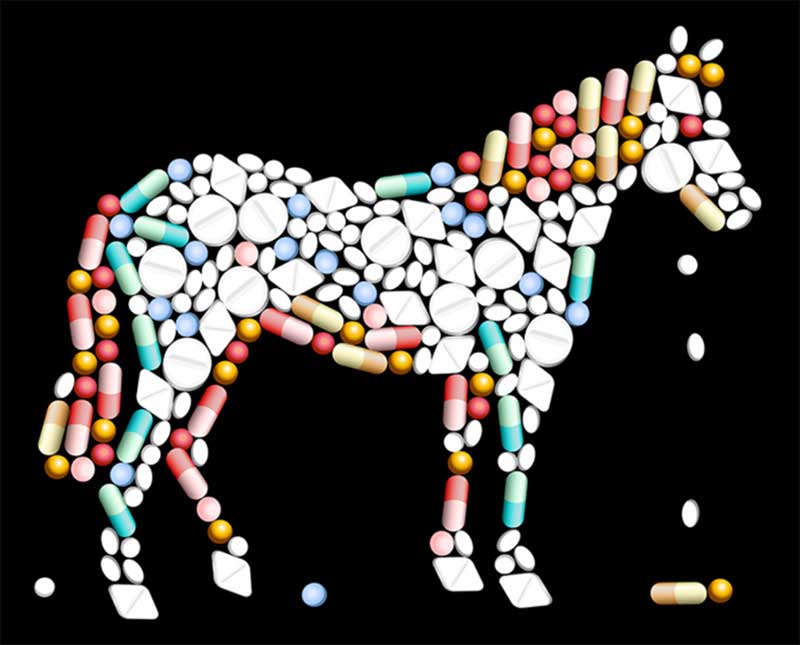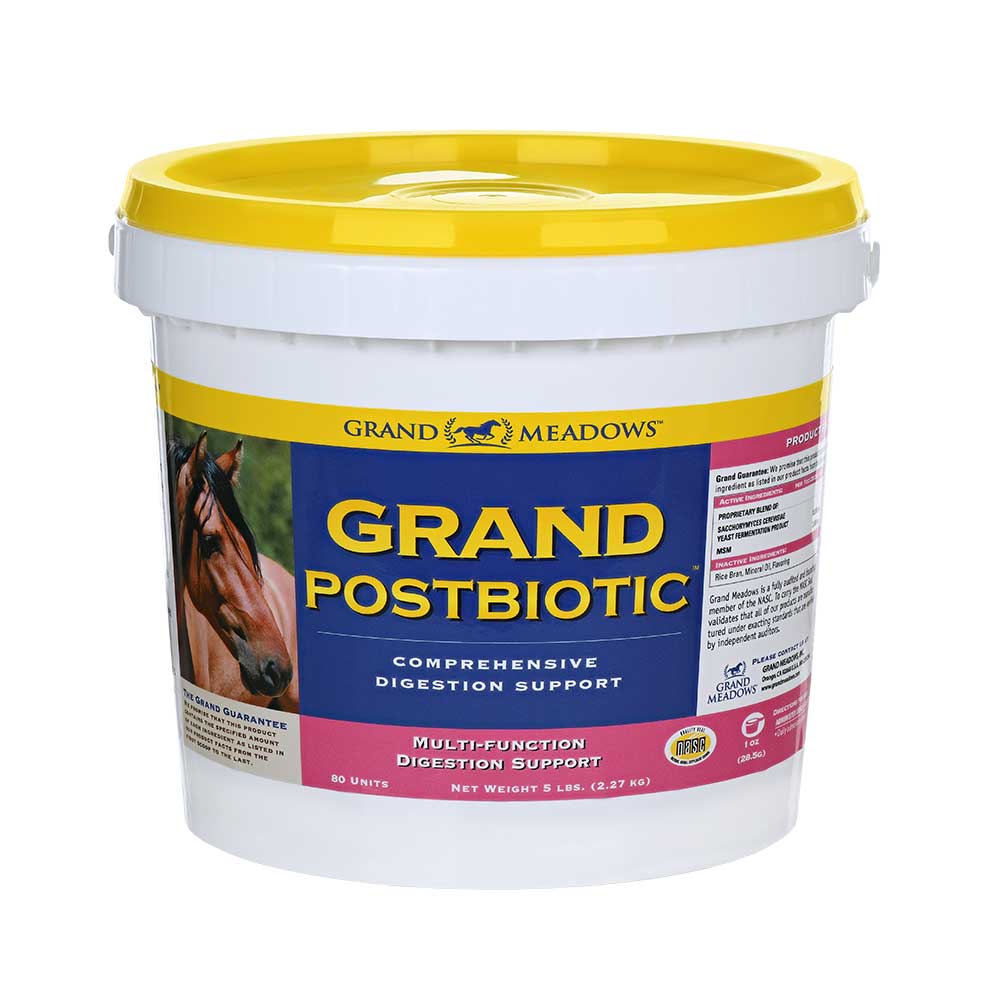Horse Supplements
Over-Supplementing – Make Sure You Don’t Follow This Common Practice
For some time at Grand Meadows we have been concerned about the widespread issue of over-feeding of horse supplements. It’s done with all good intentions ….combine greater nutritional knowledge with an ever expanding and, frankly, overwhelming supply of different horse supplements available in the marketplace.
Even if you are relatively conservative with supplements you might still be feeding ingredient(s) that, perhaps together with a fortified grain product, could be potentially harmful by upsetting mineral ratios for example. At the very least people are often wasting money. This sentiment may be surprising coming from a horse supplement manufacturer but our core principle is the health of your horse not shoving as many products as possible at you. I can remember on numerous occasions advising customers not to feed one of our supplements for one reason or another, which is normally met with a certain amount of surprise. At the other end of the scale I hear of other, high profile horse supplement manufacturers constantly pushing additional products on top of any other supplements the customer might be feeding. One manufacturer, which claims an all in one complete nutrition product, will happily promote the idea of feeding multiple additional formulas in addition to their “all-in-one” product under what can only be described as a relentless effort to glean as much money as they possibly can from their customers without any concern as to the cumulative effect of so many additional ingredients.
In most cases we find that these risky or wasted nutrient levels occur from the various ingredients that act as agents to make the core ingredients in a product work. As an example – Biotin which is universally used in hoof supplements. In order for Biotin to be utilized efficiently in the body it needs to be accompanied by Methionine, which is a sulfur bearing amino acid. You will see Methionine in many products – joint supplements, vitamin/mineral supplements to name just a couple. There is not necessarily a toxicity concern with any amino acids however we see time and time again Methionine being included in the grain and possibly 2 or 3 other supplements and certainly providing more than the horse can utilize and therefore wasting money.
So the key takeaway is if you are feeding multiple supplements that were not necessarily formulated to be fed together you have a strong likelihood of over- supplementation. Complicating matters even further are the variables of your horse’s weight, activity level, breed, age and the largely incomprehensible feed labels. To find out how to read your feed label go back to our “Why Feed a Supplement in the First Place “blog.
Two Main Areas of Concern in Horse Supplements
The two main areas of concern in horse supplements are fat-soluble vitamins and minerals. Water soluble vitamins, if fed in excess, will simply be excreted the downside of those simply being wasting money on excessive levels but fat-soluble vitamins are stored in the liver. These comprise Vitamins are A, D, E and K.
Vitamin A – A safe upper level for prolonged feeding of Vitamin A in horse supplements is 16,000 IU per kg of total diet an amount at which storage in the liver will take place without saturation. Very few mature horses will show clinical signs of excessive Vitamin A intake until reaching 100 times the upper safe amount. Overfeeding of Vitamin A can cause bone fragility, abnormal bone growth, scaly skin, poor hair coat and decreased blood clotting. All know cases of Vitamin A toxicity have been caused by over supplementing.
The most common vitamin toxicity is found with Vitamin D. A safe upper level for prolonged feeding of Vitamin D in horse supplements is 2,2000 IU per kg of total diet. Amounts of Vitamin D substantially over this figure (10 times) will not cause toxicity for the first 45=60 days. Signs of Vitamin D toxicity include higher blood phosphorous concentration, weight loss, lower feed intake, stiffness and a lower activity level. Ultimately the symptoms will become more acute with the horse lying down for extended periods and experiencing seizures.
Vitamin E has not been found in studies to be toxic when fed at high levels but may prevent the absorption of other fat-soluble vitamins. Levels of 4500IU have been fed to high performance horses in the past with no apparent ill-effects, although there is no scientific evidence to support the need for levels this high.
Vitamin K is available in 3 forms K1, K2 and K3. The most common form available commercially in horse supplements is K3, as it is usually in a water soluble form and thus does not represent a risk. Vitamin K can also be injected intramuscularly or intravenously and an injection measuring as little as 2mg per kg of body weight can cause acute renal failure and death.
As this is rather a dry topic, to say the least, I will reserve my comments on minerals and the various potential hazards for another blog.
To get an idea of how bad mineral toxicity can be many of you may remember back in 2009 when 21 polo ponies died as a result of a mistake by a compounding pharmacy where excessive levels of selenium were fed in a “cocktail” of selenium, potassium, B-12 and magnesium. https://blogs.scientificamerican.com/news-blog/mystery-solved-polo-ponies-probably-2009-04-30/
It is not my intention to scare people in this piece but I do strongly believe that, while there are scarce examples of chronic over-feeding of horse supplements resulting in major health problems, it is important to examine carefully the cumulative totals of what you are feeding, if nothing else to avoid wasting money.


